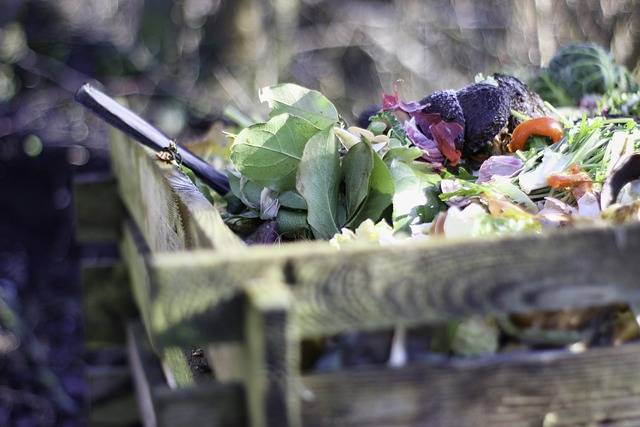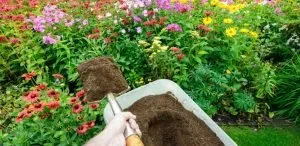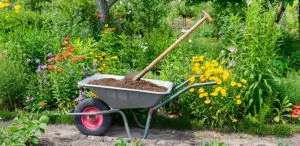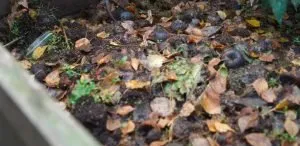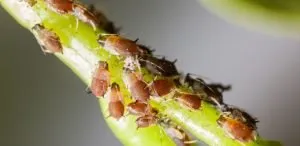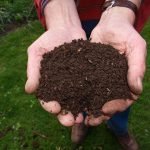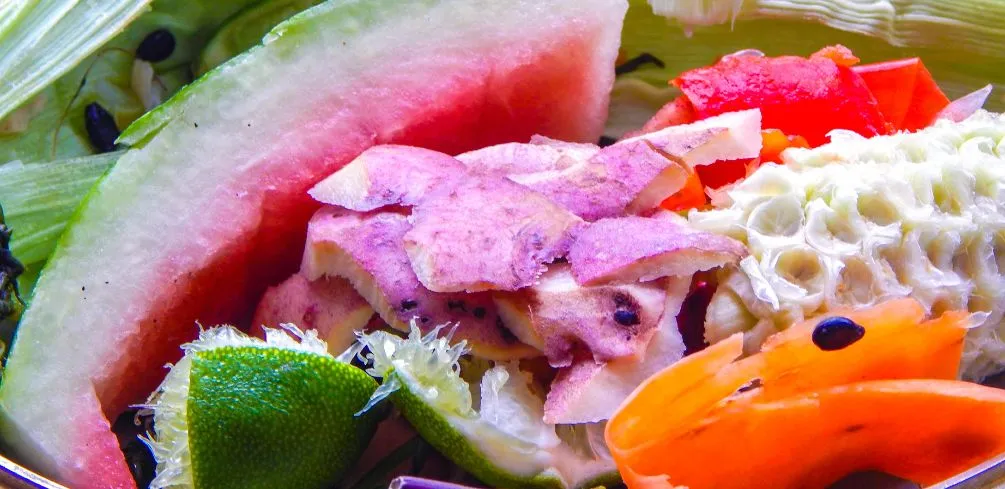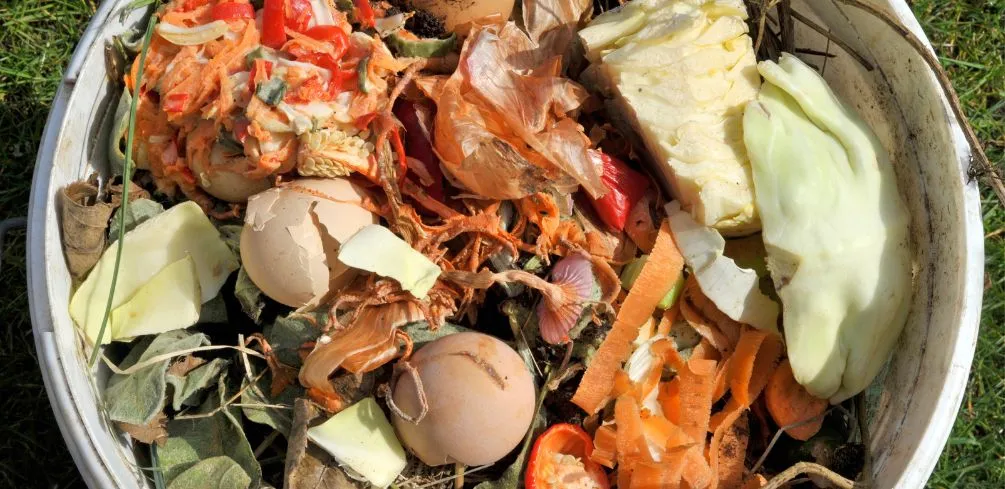Composting is a great way to help the environment by reducing waste and providing valuable nutrients for plants, soil, and ecosystems. It can be difficult to know what items are suitable for composting and which should not be composted. This article will provide an overview of what should and shouldn’t be composted, as well as tips on how to get started with your own composting efforts.
The process of decomposition is essential for helping organic materials break down into valuable nutrients that can feed plants and enrich the soil. Composting is one way to create these nutrient-rich materials, but it is important to know which items can safely be added to your compost pile.
From kitchen scraps like vegetable peels to yard waste such as grass clippings, many types of organic materials can be broken down into a compost pile. However, some items should not be included in a backyard compost bin or municipal collection service due to their potential to cause harm or contaminate the finished compost material.
By following the guidelines outlined in this article, readers will gain insight into the world of composting and learn how they can contribute to a more sustainable lifestyle through their own composting efforts.
With a better understanding of what can and cannot be safely added to a backyard composter or municipal collection service, readers will also come away with knowledge about how they can help reduce global waste levels while creating nutrient-rich fertilizer for their gardens or other outdoor spaces.
Understanding Composting
Composting is the practice of taking organic materials and allowing them to decompose in a controlled environment. It is a nature-based process that has been used for centuries with great success. Composting basics include selecting the right materials, understanding the composting process, and appreciating its benefits.
The composting process begins with gathering organic materials from the environment. These can be anything from food scraps and yard waste to straw, wood chips, and manure. After collecting these materials, they are mixed together in a pile or bin and allowed to decompose naturally over time.
During this process, beneficial microorganisms break down the organic matter into nutrient-rich soil known as “compost,” which can then be used to enrich gardens or other types of vegetation.
Composting offers many benefits, including improved soil structure and fertility, greater drought tolerance, reduced need for water and fertilizer inputs, fewer weed problems, increased resistance to pests and diseases, improved air quality through reduced emissions of carbon dioxide into the atmosphere, and enhance biodiversity by providing habitat for wildlife species that rely on composted habitats.
Composting also helps reduce waste going into landfills by providing an alternative method for disposing of organic material that would otherwise end up in these facilities. Additionally, it reduces the amount of methane produced in landfills from decaying organic matter, which contributes to global warming when released into the atmosphere.
Compost types vary depending on their ingredients; however, most contain some combination of nitrogen-rich green material (such as grass clippings), carbon-rich brown material (such as leaves), and soil microbes which help break down the organic matter. Common misconceptions about composting include thinking it takes too much work or takes too long, but with proper preparation, it can be done relatively quickly and easily with minimal effort on your part.
Acceptable Compost Materials
Having explored the basics of composting, it is now necessary to understand what can and cannot be added to the compost heap. Composting requires careful consideration when selecting materials, as certain items will break down faster than others, and incorrect materials can contaminate the compost.
Concerning components that are suitable for adding to a compost bin, fruit scraps, vegetable scraps, coffee grounds, tea leaves, and eggshells are all acceptable.
Fruit and vegetable scraps add valuable nutrients to the compost pile. To ensure maximum benefit from these items, it is best to chop them into small pieces before adding them in. Coffee grounds and tea leaves are also highly beneficial as they provide an excellent source of nitrogen which helps with decomposition. Eggshells should be crushed up as they take longer to break down in the compost heap, but they add calcium which helps with plant growth.
It is important not to add any animal products, such as meat or dairy, into a compost bin as these will produce an unpleasant smell and may attract unwanted pests like rats and flies. Additionally, plants that have been affected by the disease should be avoided as this could spread throughout the rest of the plants in your garden. In addition to this, any foreign objects such as plastics or metals should not be added either due to their slow rate of decomposition.
By understanding what materials should be included in a compost pile, it is possible to create nutrient-rich soil that can help plants thrive while reducing waste sent off to landfill sites. With the right items added in a timely manner, it is easy to create a sustainable cycle that benefits both nature and people alike.
Non-Compostable Items
When deciding what to compost, it is important to be aware of the items that are not suitable for composting. Non-compostable items include plastic, aluminum, rubber, and glass. Plastic is a synthetic material that does not break down in the soil and, therefore, cannot be added to compost.
Aluminum, rubber, and glass are all non-biodegradable materials that will remain intact in the environment for many years. The presence of these materials in a compost pile may attract pests and cause the compost to become contaminated.
Furthermore, certain food products should not be added to a compost pile due to their potential impact on the environment. Dairy, meat, and fish products contain animal fats which create anaerobic conditions when mixed with organic matter, making them unsuitable for composting. Synthetic fertilizers may also have a negative effect on the quality of a compost pile as they contain chemicals that can disrupt natural nutrient cycles.
Composting requires careful consideration of what is suitable for inclusion and what should be kept out of the pile in order to ensure it remains healthy and beneficial for plants. In order to achieve this goal, it is essential that individuals adhere to the guidelines set by local authorities regarding what can and cannot be included in the compost pile.
Benefits Of Composting
Composting offers many environmental benefits. It is a natural way to improve the soil by providing valuable nutrients and organic matter. Compost can be used as a natural fertilizer for plants and gardens, increasing their health and productivity. Compost also helps conserve water by improving the soil’s ability to hold onto moisture, allowing the plants to use less water over time. This, in turn, helps reduce water waste.
In addition, composting can help reduce carbon emissions. When compostable materials are sent to landfills, they decompose anaerobically and release greenhouse gases such as methane into the atmosphere. By composting instead of throwing away the organic material, these gases can be prevented from entering our air. Furthermore, using compost instead of chemical fertilizers reduces the risk of pollutants entering bodies of water or the atmosphere through runoff or leaching.
The process of composting has many advantages that make it beneficial for both people and the planet alike. Its benefits include improved soil quality, increased plant productivity, reduced water usage, and decreased carbon emissions. With so many positive outcomes, it’s clear why composting is a great choice for anyone looking to create an environmentally friendly lifestyle.
Composting Safety Guidelines
Composting is a process by which organic material is broken down in an oxygen-rich environment to form a nutrient-rich soil amendment. Following safe composting guidelines can help ensure that the compost created is of the highest quality and free from potential contaminants.
As with any activity involving material that has been exposed to bacteria or other contaminants, there are certain risks associated with composting. For instance, it is important to wear protective gear such as gloves when handling compost since some bacteria, and other contaminants may be present.
Moreover, good ventilation should be maintained to reduce the risk of inhalation of dust or other particles produced during the composting process.
In order to minimize risks, it is important to follow specific guidelines for composting methods and materials. Composting materials should include only organic materials like garden trimmings, fruit and vegetable scraps, coffee grounds, and egg shells; materials such as meat scraps, dairy products, oils, and fats should not be added due to their increased risk of contamination.
The correct temperature range for successful decomposition must also be maintained; temperatures too high may cause the compost pile to become dry, while temperatures too low will inhibit microbial activity. It is also important to turn the pile regularly in order for oxygen to circulate properly throughout the pile and aid in decomposition.
By following these simple tips and guidelines for safe composting practices, you can create a nutrient-rich soil amendment that will nourish your garden without putting yourself at risk.
Frequently Asked Questions
What Type Of Compost Bin Should I Use?
When it comes to composting, selecting the right bin is essential. There are several different types of containers available for composting, each with its own advantages and disadvantages. Composting bins, composting containers, compost tumblers, worm composters, and home composters are all widely used tools for turning organic waste into nutrient-rich soil.
Composting bins are typically the most affordable option. These bins are designed to be placed outdoors and can easily be moved around the yard or garden as needed. They come in a variety of sizes and shapes to fit any space. However, these bins usually require more frequent stirring and turning than other types of containers in order to ensure proper aeration and decomposition.
Compost tumblers are a great option for those who want an easy-to-use solution that requires minimal effort. These devices allow users to easily spin their compost material without having to manually stir or turn it, resulting in faster decomposition times. In addition, tumblers often come with built-in filters, which help keep unpleasant odors at bay while creating nutrient-rich soil quickly and efficiently.
For those looking for a more hands-on approach to composting, worm composters may be the ideal choice. These systems use worms to consume kitchen scraps in order to produce a nutrient-rich soil amendment that can be used in gardens or around plants.
Worm composter systems also require less maintenance than traditional compost bins or tumblers since worms do much of the work for you. Home composters provide yet another option for those interested in turning their kitchen scraps into useful fertilizer for their outdoor spaces.
These units typically feature multiple chambers which can be filled with organic waste materials before being sealed shut until they have fully decomposed into usable soil amendments that can then be added directly into gardens or flower beds.
No matter what type of container you choose, the key is finding one that works best with your lifestyle and budget while producing high-quality soil amendments that will help nourish your garden or outdoor space over time. With so many options available today, there’s sure to be something out there that meets all your needs when it comes to creating nutrient-rich soils from organic waste materials at home!
Are There Any Shortcuts To Speed Up The Composting Process?
Precise and purposeful composting can be a time-consuming task, but with the right tricks and tools, fast composting is possible. Compost accelerators, compost-hacks, compost-shortcuts, and compost-speeding-up are all terms that refer to the same concept: speeding up the composting process. While these methods may not result in perfect compost every time, they can make the process much faster and easier.
One of the most popular methods of fast composting is using an aerobic compost bin. Aerobic bins use oxygen to speed up the decomposition process. This type of bin also requires the regular turning of the materials inside to ensure adequate aeration and breakdown of organic matter. Another advantage of this type of bin is that it produces fewer odors than other types of bins, such as anaerobic ones.
Another approach to fast-composting is to use additives such as manure or other organic material. Adding these materials can help speed up the decomposition process by providing additional nutrients for microorganisms present in the bin.
Plus, adding moisture can also help speed up decomposition as it helps microbes break down organic matter faster. Finally, temperature control can also be used to accelerate decomposition by maintaining ideal temperatures for microbial activity in the bin.
By utilizing some of these approaches, one can significantly reduce the time spent on traditional composting while still producing quality end results. With enough patience and practice, anyone can master these techniques and become a master composter in no time!
How Often Should I Turn My Compost Pile?
The frequency of turning a compost pile is an important factor in the success of composting. Compost piles need to be stirred and rotated on a regular basis to ensure that the materials decompose properly. By doing this, it ensures that oxygen can reach all parts of the pile, allowing microorganisms and other organisms to break down organic matter more quickly. This promotes aerobic decomposition, which is faster than anaerobic decomposition.
When it comes to how often one should turn their compost pile, it depends on several factors, such as the size of the pile, its ingredients, and its location. Generally speaking, most compost piles should be turned at least once every two weeks or so.
This will help speed up the process by providing proper oxygenation and maintaining temperature levels necessary for effective decomposition. Additionally, removing finished material from the center of the pile helps keep air flowing through the entire pile.
Compost pile maintenance is essential for successful composting; however, there are some methods that can help accelerate the process further. For example, adding extra moisture or carbon-rich materials like dried leaves or grass clippings can help maintain a balance in moisture levels and nutrient composition within the pile.
Furthermore, using a pitchfork or shovel regularly to mix up materials in a large compost bin helps keep air circulating throughout while avoiding compaction, which would restrict airflow.
Maintaining proper compost pile frequency by turning and stirring regularly is key to successful composting that yields nutrient-rich soil amendments in a timely manner. To achieve this goal, one must consider factors such as size, ingredients, and location when determining how often they should turn their compost pile; additionally, utilizing certain methods such as adding moisture or carbon-rich materials can speed up the process even further.
How Do I Know When My Compost Is Ready To Use?
Composting is a process that can be used to convert organic waste into a nutrient-rich soil amendment. Knowing when the composting cycle is complete, and the finished product is ready for use is an important part of successful composting. There are several factors to consider in determining the time frame for composting and recognizing when it is ready for use.
The temperature of the compost pile is an indicator of its progress and helps determine the rate at which it will decompose. According to experts, the ideal temperature range for active composting should be between 130°F and 160°F.
Compost piles that do not reach this temperature range may take considerably longer to produce a finished product. This temperature range also helps ensure that beneficial microorganisms are able to break down materials in the compost pile more quickly.
The type of materials used in the compost pile will also affect how long it takes to finish and how well it will work once complete. Composting materials can generally be broken down into four stages: green or nitrogen-rich materials, brown or carbon-rich materials, soil, and water.
It’s important to include all four components in order to create a balanced mix that provides optimal decomposition conditions. Additionally, these components should be mixed together in layers rather than added as one large mass so that air can get through and help facilitate microbial activity.
It’s helpful to keep in mind these key elements when tending your compost pile:
- Monitor your compost’s temperature regularly using a thermometer.
- Make sure you have a good mixture of green, brown, soil, and water
- Turn your compost frequently with a pitchfork or shovel
- Check for moisture levels – if they are too dry, add more water.
When all of these things have been taken care of properly and temperatures have remained within their ideal range over time, your finished product should be ready for use as fertilizer or soil conditioner soon after. With patience comes success!
Can I Compost Food Scraps From Restaurants Or Cafeterias?
Composting food scraps from restaurants or cafeterias is like a puzzle; in order to get the pieces to fit, you need to know what items are safe to compost. With the right information, restaurant and cafeteria owners can easily incorporate composting into their waste management plan.
3 Benefits of Composting Restaurant and Cafeteria Food Scraps:
- Reduces landfill waste
- Provides beneficial nutrients for garden soil
- Minimizes environmental impact
Composting restaurants and cafeterias provide an effective way of diverting potentially hazardous food waste away from landfills and back into the environment. It is important for restaurant and cafeteria owners to understand which food scraps can be safely composted, such as vegetable peelings, eggshells, coffee grounds, fruit cores, and tea bags. In contrast, non-compostable items such as meat, dairy products, bones, plastic wrap, or foil should not be added to the compost pile.
It is also important for restaurant and cafeteria owners to properly manage their compost bins in order to prevent contamination with non-compostable materials while also ensuring that they are following local regulations on the proper disposal of organic material.
Additionally, it is essential that restaurants and cafeterias use a compostable collection system, such as bins or bags that are made out of biodegradable or recyclable materials, in order to reduce the amount of unnecessary waste generated by the establishment.
Restaurant and cafeteria owners who adopt composting practices benefit from reduced waste disposal costs while also playing their part in protecting our planet’s future health by reducing greenhouse gas emissions associated with traditional methods of disposing of food waste.
Composting is an inexpensive way for restaurants and cafeterias to ensure that their food scraps are recycled responsibly while at the same time making a positive impact on their community’s environmental well-being.
Conclusion
Composting can be an incredibly rewarding process if done correctly. It is important to understand the basics of composting, including the type of bin used, how often to turn the pile, and when it is ready for use. With a few simple tips, composters can speed up their composting process and create nutrient-rich soil in no time.
When considering what materials to add to the compost pile, it is important to remember that not all materials are suitable for composting. Organic matter such as fruit and vegetable scraps, grass clippings, leaves, and coffee grounds are safe to include in the mix.
On the other hand, meat scraps, dairy products, and pet waste should be avoided as these items will attract pests and release unpleasant odors during decomposition. Additionally, restaurant or cafeteria food scraps should not be added to a home compost pile due to potential contamination from leftover chemicals or cleaning agents used in commercial food processing.
By understanding what materials are safe for composting and following these basic guidelines, anyone can create nutrient-rich soil that will benefit their garden or landscape. Composting is a great way to reduce waste while creating an eco-friendly solution for healthy plants and vegetables!
